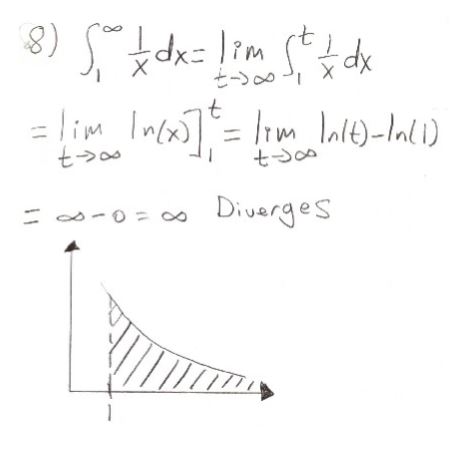
Step 1: Identifying the Function for Integration
We start by identifying the function we aim to integrate, which is \( \frac{1}{x} \). This function is a simple rational function with a single term in the denominator.
Step 2: Setting Up the Integral
We set up the integral with the given limits, which are \( x = 1 \) and \( x = \infty \):
\[ \int_{1}^{\infty} \frac{1}{x} \, dx \]
Step 3: Applying Limits for the Improper Integral
Since the integral has an infinite upper limit, it is an improper integral. We use limits to evaluate it:
\[ \lim_{{b \to \infty}} \int_{1}^{b} \frac{1}{x} \, dx \]
Step 4: Finding the Antiderivative
The antiderivative of \( \frac{1}{x} \) is \( \ln|x| + C \), where \( C \) is the constant of integration.
Step 5: Applying the Upper and Lower Limits
We apply the upper and lower limits to the antiderivative:
\[ [\ln|x|]_{1}^{b} \]
Step 6: Evaluating the Limits
After applying the limits, we find:
\[ \lim_{{b \to \infty}} (\ln|b| – \ln|1|) = \infty – 0 = \infty \]
Step 7: Final Result and Interpretation
The integral diverges, meaning it does not converge to a finite value. This result is intriguing because it shows that even a simple function like \( \frac{1}{x} \) can have an integral that diverges when evaluated over an infinite range.
